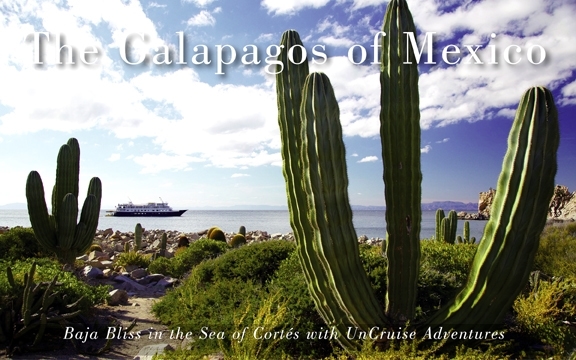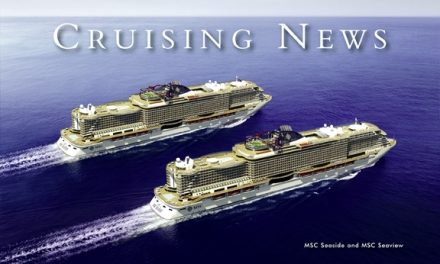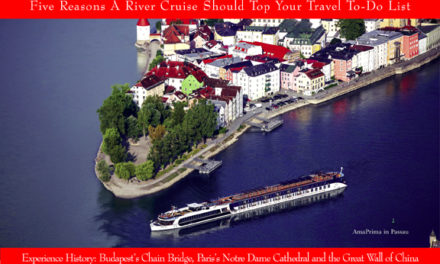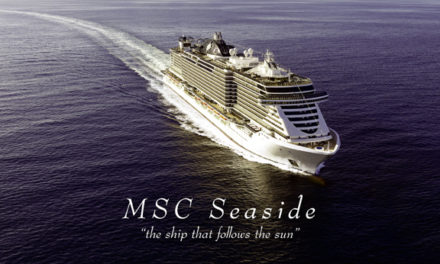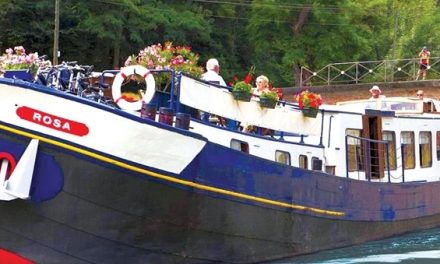Mexico
The Galapagos of Mexico
by Ilona Kauremszky
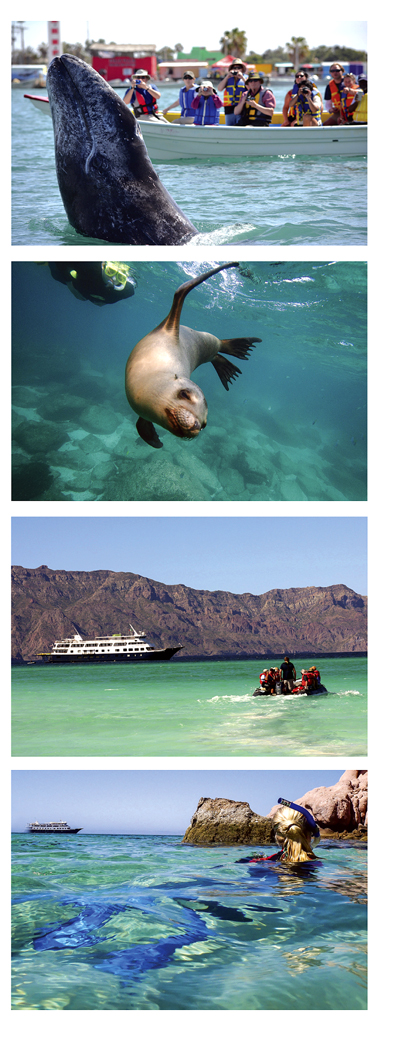
Beneath the sun-kissed azure waters, schools of iridescent angelfish, damsel fish, and rainbow wrasses glide though the coral reefs that teem with clusters of anemones and sea cucumbers. Above the speckled blue sea, piercing squeals from a pod of dolphins is the early morning wake up call. In a New York minute, the entire boat load arrives on deck to discover a bluenose playing on the bow wake. Welcome to the Sea of Cortés otherwise dubbed “The Galapagos of Mexico.”
Mexico’s California Baja Sur (Spanish for Lower California) is putting a whole new spin on adventure travel as million-dollar resorts, golf courses, and the untamed wilderness have meshed around the Sea of Cortes which has been designated a UNESCO World Heritage Site in 2005.
A great way to experience the marine life and awesome views is to splurge for passage on a boutique vessel like UnCruise Adventures (formerly American Safari Cruises) which offers seven-night cruise itineraries to the most scenic spots in the region.
The US-based company around since 1996 has been ushering exclusive groups of up to 84 guests in the lap of luxury and style aboard its 232-ft Safari Endeavor which was constructed in 1983 and refurbished in 2012.
Inside the spacious posh Commodore Suite there’s a private Jacuzzi and French doors open onto a balcony. Or if you prefer, the deck is always lively at the Sun Lounge where parched guests enjoy sundowners with toasts of champagne perhaps as a pod of whales greet you.
When the cruise company started, this part of Mexico was virtually unknown. But that wasn’t always so.
First discovered by the Spanish conquistador, Hernan Cortés who was in search of the North Passage and later by Jesuits who set up missionaries in seaside villages called, La Paz, Loreto, and Cabo San Lucas, the Baja was deemed as a sanctuary. In the forties author John Steinbeck took a 400-mile journey aboard a 76-foot sardine boat and crowned the Sea of Cortés as “reality changing with the moment.” In 1948 actor John Wayne and singer Bing Crosby were so captivated by the unsung wild beauty of La Paz that they built the region’s first resort.
The Sea of Cortés has long been hailed as a fishing capital, but it became even more popular after American WWII pilots flying across the desolate peninsular spotted hundreds of schools of jumping marlin. Today, the sea has been declared a whale sanctuary and is considered the Marlin Capital of the World and with good reason.
Formed by a fracture on the San Andreas Fault, the Sea of Cortés was formed 15 million years ago. It’s the youngest sea in the world and is still largely undeveloped. The pristine ecosystem receives the churning sediments from the Colorado River and the mélange of the fresh sea water has created an astonishing array of life. The entire sea and its islands are designated as a special Biosphere Reserve to protect the extraordinary biodiversity found few other places on earth.
And for exclusive adventure cruise buffs, this is Shangri-la.
After the captain’s welcome, everyone gets to know each other over a flute of champagne, toasting into the magenta sunset as the boat pushes forth from La Paz harbor. It’s off to the Sea of Cortés in search of Nemo and Flipper.
You quickly adopt casualness on board as guests soon discover the voyage demands a barefoot elegance. On deck pick up some binoculars, scan the horizon as the captain narrates some stories or hear first-hand accounts from seasoned naturalists. Each day brings new discoveries. The captain can summon everyone to the deck for a view of a lifetime. In the distance, a large blue whale spurts water high in the air. Of the 11,000 known to exist in the world, hundreds of them visit the Sea of Cortés from November until late February.
While the Sea of Cortés has more than 800 species of fish, the surrounding desert possesses its own unique ecosystem where endemic flora and fauna flourish. Strange looking valleys of sentinel-like cardon cactus (the largest in the world), primitive cirious and elephant trees are some of the 4,000 different plants that form the spiny green carpet from the sandy earth.
Beneath the azure water, tufts of dense plankton are met by pods of filter- feeding whales, giant mantas, hammerhead sharks and whale sharks meandering around the vessel. Then all of a sudden, the sea pops like flying popcorn as dolphins explode out of the water in a marine chorus line. There are 20 leaping on the port side and 30 on starboard, and dozens more play in the pressure wave from the bow of the yacht. It’s impossible to know where to aim the camera – they’re everywhere. No wonder, this aquatic paradise was once described by famous oceanographer Jacques Cousteau as the “aquarium of the world with the largest diversity of sea life we can find on earth.”
For island hopping, the boat plies the azure water on its voyage to Isla San Francisco, an uninhabited islet in the Sea of Cortés. At Isla San Francisco guests can snorkel, kayak, hike or relax along the pristine beach.
There’s no need for fancy ballrooms, night shows and all-you-can-eat-buffets when you have an aquatic theater group performing hourly. Yet it is a more intimate experience on the smaller vessel. You can go into the shallow craggily waters or the open sea, where ever the action happens to be. It’s pure Baja bliss.
www.visitloscabos.travel
www.americansafaricruises.com
Click on cover to view published article

